Blockchain Technology Applications and Analysis
VerifiedAdded on 2020/05/28
|7
|1531
|46
AI Summary
This assignment delves into the applications and analysis of blockchain technology. It examines its effectiveness in addressing data security risks within mobile commerce, particularly highlighting the use cases of Bitcoin wallets and the Internet of Things (IoT). The analysis draws upon research papers and case studies, including Suankaewmanee et al.'s work on MobiChain, a Mobile Blockchain API for Android devices. Furthermore, the assignment discusses the potential benefits and challenges of blockchain implementation in various applications.
Contribute Materials
Your contribution can guide someone’s learning journey. Share your
documents today.
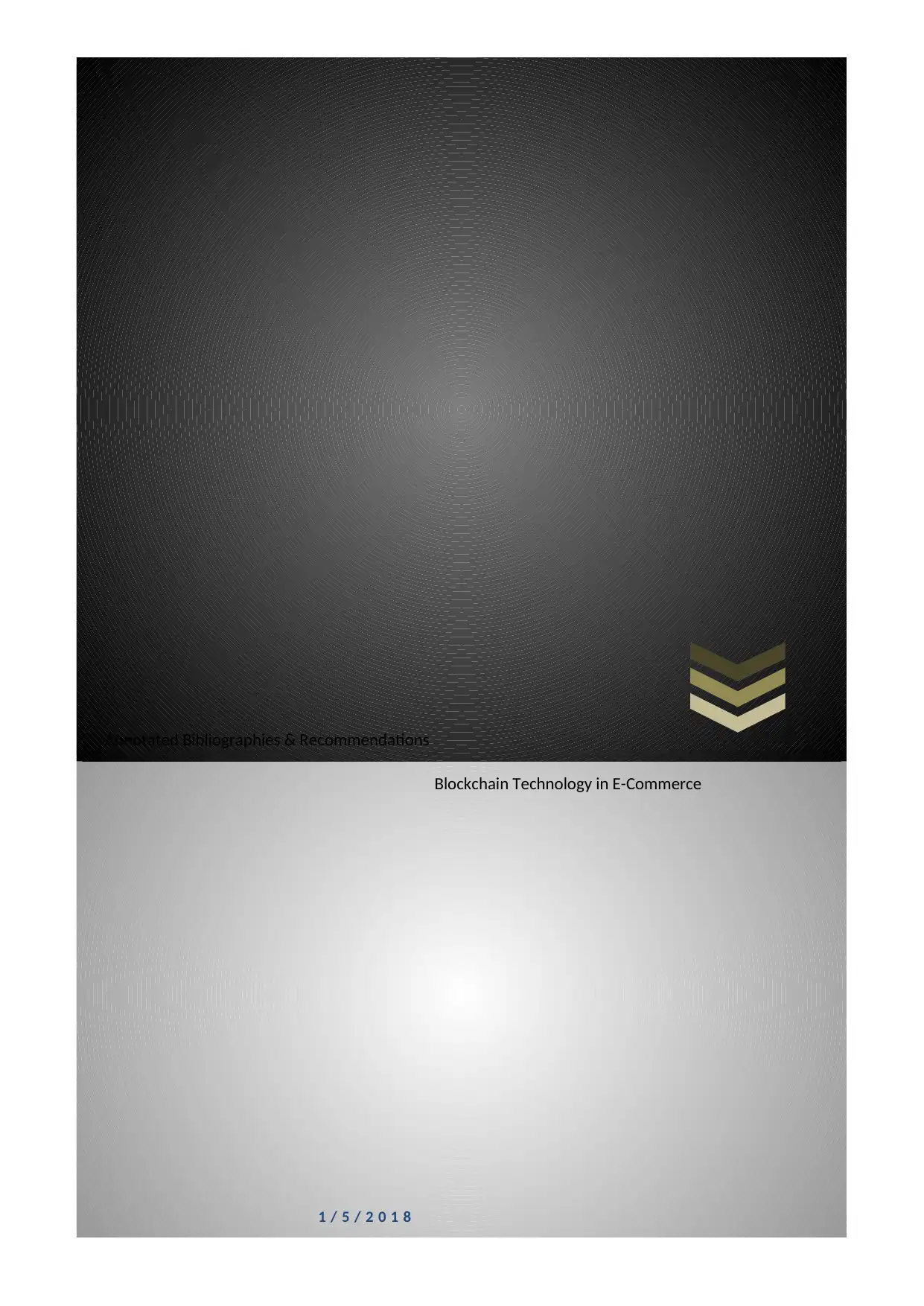
Annotated Bibliographies & Recommendations
1 / 5 / 2 0 1 8
Blockchain Technology in E-Commerce
1 / 5 / 2 0 1 8
Blockchain Technology in E-Commerce
Secure Best Marks with AI Grader
Need help grading? Try our AI Grader for instant feedback on your assignments.
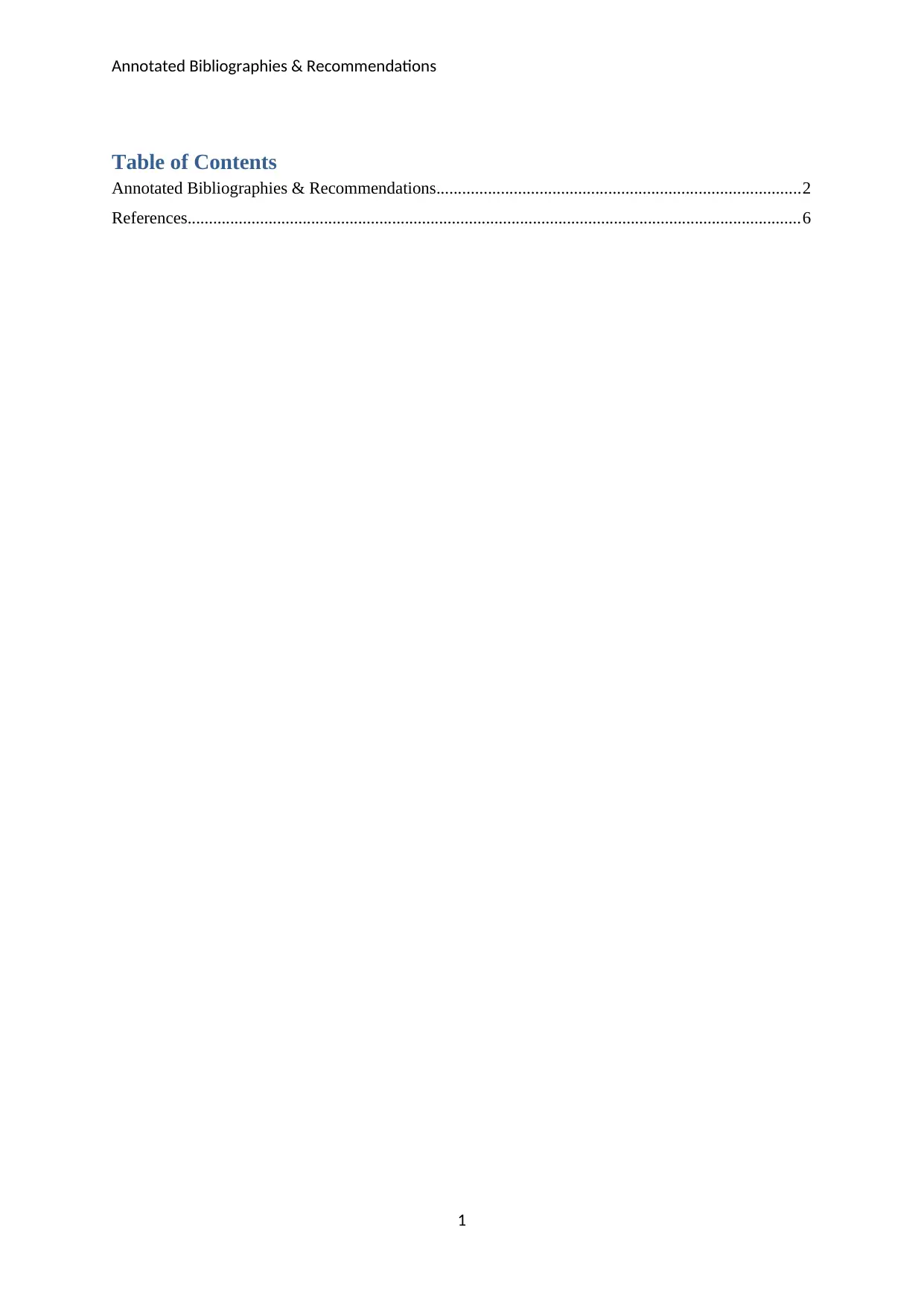
Annotated Bibliographies & Recommendations
Table of Contents
Annotated Bibliographies & Recommendations.....................................................................................2
References................................................................................................................................................6
1
Table of Contents
Annotated Bibliographies & Recommendations.....................................................................................2
References................................................................................................................................................6
1
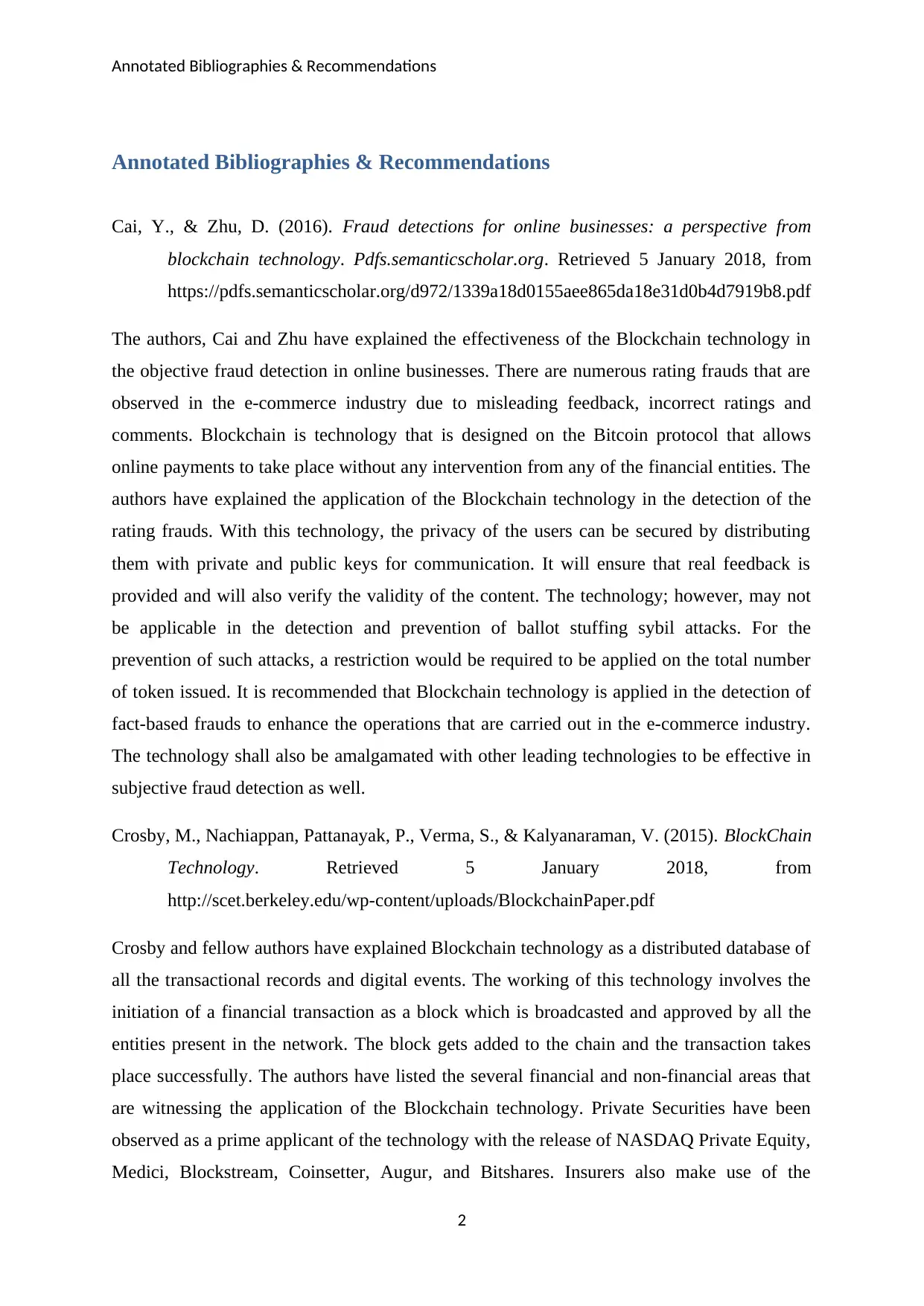
Annotated Bibliographies & Recommendations
Annotated Bibliographies & Recommendations
Cai, Y., & Zhu, D. (2016). Fraud detections for online businesses: a perspective from
blockchain technology. Pdfs.semanticscholar.org. Retrieved 5 January 2018, from
https://pdfs.semanticscholar.org/d972/1339a18d0155aee865da18e31d0b4d7919b8.pdf
The authors, Cai and Zhu have explained the effectiveness of the Blockchain technology in
the objective fraud detection in online businesses. There are numerous rating frauds that are
observed in the e-commerce industry due to misleading feedback, incorrect ratings and
comments. Blockchain is technology that is designed on the Bitcoin protocol that allows
online payments to take place without any intervention from any of the financial entities. The
authors have explained the application of the Blockchain technology in the detection of the
rating frauds. With this technology, the privacy of the users can be secured by distributing
them with private and public keys for communication. It will ensure that real feedback is
provided and will also verify the validity of the content. The technology; however, may not
be applicable in the detection and prevention of ballot stuffing sybil attacks. For the
prevention of such attacks, a restriction would be required to be applied on the total number
of token issued. It is recommended that Blockchain technology is applied in the detection of
fact-based frauds to enhance the operations that are carried out in the e-commerce industry.
The technology shall also be amalgamated with other leading technologies to be effective in
subjective fraud detection as well.
Crosby, M., Nachiappan, Pattanayak, P., Verma, S., & Kalyanaraman, V. (2015). BlockChain
Technology. Retrieved 5 January 2018, from
http://scet.berkeley.edu/wp-content/uploads/BlockchainPaper.pdf
Crosby and fellow authors have explained Blockchain technology as a distributed database of
all the transactional records and digital events. The working of this technology involves the
initiation of a financial transaction as a block which is broadcasted and approved by all the
entities present in the network. The block gets added to the chain and the transaction takes
place successfully. The authors have listed the several financial and non-financial areas that
are witnessing the application of the Blockchain technology. Private Securities have been
observed as a prime applicant of the technology with the release of NASDAQ Private Equity,
Medici, Blockstream, Coinsetter, Augur, and Bitshares. Insurers also make use of the
2
Annotated Bibliographies & Recommendations
Cai, Y., & Zhu, D. (2016). Fraud detections for online businesses: a perspective from
blockchain technology. Pdfs.semanticscholar.org. Retrieved 5 January 2018, from
https://pdfs.semanticscholar.org/d972/1339a18d0155aee865da18e31d0b4d7919b8.pdf
The authors, Cai and Zhu have explained the effectiveness of the Blockchain technology in
the objective fraud detection in online businesses. There are numerous rating frauds that are
observed in the e-commerce industry due to misleading feedback, incorrect ratings and
comments. Blockchain is technology that is designed on the Bitcoin protocol that allows
online payments to take place without any intervention from any of the financial entities. The
authors have explained the application of the Blockchain technology in the detection of the
rating frauds. With this technology, the privacy of the users can be secured by distributing
them with private and public keys for communication. It will ensure that real feedback is
provided and will also verify the validity of the content. The technology; however, may not
be applicable in the detection and prevention of ballot stuffing sybil attacks. For the
prevention of such attacks, a restriction would be required to be applied on the total number
of token issued. It is recommended that Blockchain technology is applied in the detection of
fact-based frauds to enhance the operations that are carried out in the e-commerce industry.
The technology shall also be amalgamated with other leading technologies to be effective in
subjective fraud detection as well.
Crosby, M., Nachiappan, Pattanayak, P., Verma, S., & Kalyanaraman, V. (2015). BlockChain
Technology. Retrieved 5 January 2018, from
http://scet.berkeley.edu/wp-content/uploads/BlockchainPaper.pdf
Crosby and fellow authors have explained Blockchain technology as a distributed database of
all the transactional records and digital events. The working of this technology involves the
initiation of a financial transaction as a block which is broadcasted and approved by all the
entities present in the network. The block gets added to the chain and the transaction takes
place successfully. The authors have listed the several financial and non-financial areas that
are witnessing the application of the Blockchain technology. Private Securities have been
observed as a prime applicant of the technology with the release of NASDAQ Private Equity,
Medici, Blockstream, Coinsetter, Augur, and Bitshares. Insurers also make use of the
2
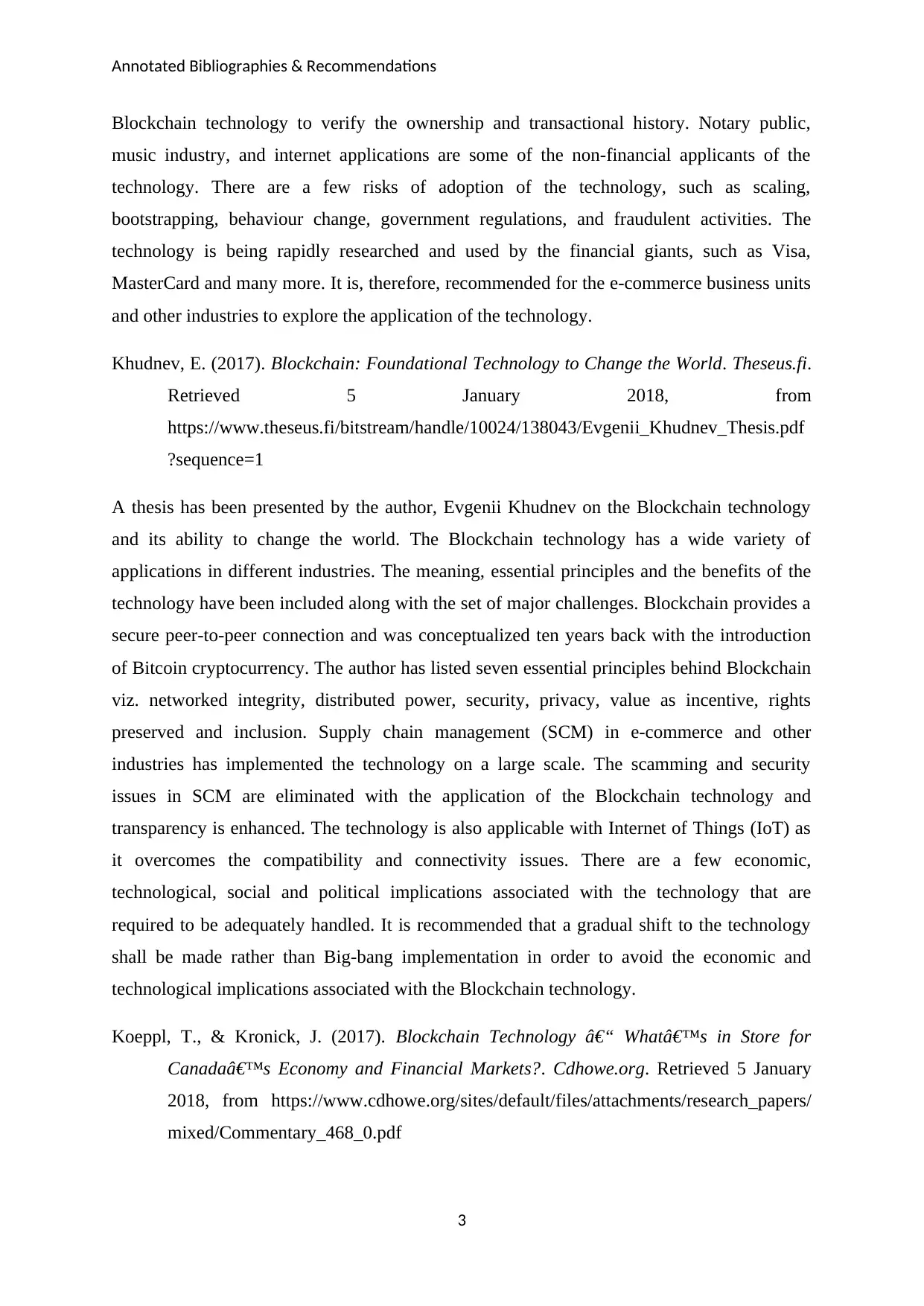
Annotated Bibliographies & Recommendations
Blockchain technology to verify the ownership and transactional history. Notary public,
music industry, and internet applications are some of the non-financial applicants of the
technology. There are a few risks of adoption of the technology, such as scaling,
bootstrapping, behaviour change, government regulations, and fraudulent activities. The
technology is being rapidly researched and used by the financial giants, such as Visa,
MasterCard and many more. It is, therefore, recommended for the e-commerce business units
and other industries to explore the application of the technology.
Khudnev, E. (2017). Blockchain: Foundational Technology to Change the World. Theseus.fi.
Retrieved 5 January 2018, from
https://www.theseus.fi/bitstream/handle/10024/138043/Evgenii_Khudnev_Thesis.pdf
?sequence=1
A thesis has been presented by the author, Evgenii Khudnev on the Blockchain technology
and its ability to change the world. The Blockchain technology has a wide variety of
applications in different industries. The meaning, essential principles and the benefits of the
technology have been included along with the set of major challenges. Blockchain provides a
secure peer-to-peer connection and was conceptualized ten years back with the introduction
of Bitcoin cryptocurrency. The author has listed seven essential principles behind Blockchain
viz. networked integrity, distributed power, security, privacy, value as incentive, rights
preserved and inclusion. Supply chain management (SCM) in e-commerce and other
industries has implemented the technology on a large scale. The scamming and security
issues in SCM are eliminated with the application of the Blockchain technology and
transparency is enhanced. The technology is also applicable with Internet of Things (IoT) as
it overcomes the compatibility and connectivity issues. There are a few economic,
technological, social and political implications associated with the technology that are
required to be adequately handled. It is recommended that a gradual shift to the technology
shall be made rather than Big-bang implementation in order to avoid the economic and
technological implications associated with the Blockchain technology.
Koeppl, T., & Kronick, J. (2017). Blockchain Technology – What’s in Store for
Canada’s Economy and Financial Markets?. Cdhowe.org. Retrieved 5 January
2018, from https://www.cdhowe.org/sites/default/files/attachments/research_papers/
mixed/Commentary_468_0.pdf
3
Blockchain technology to verify the ownership and transactional history. Notary public,
music industry, and internet applications are some of the non-financial applicants of the
technology. There are a few risks of adoption of the technology, such as scaling,
bootstrapping, behaviour change, government regulations, and fraudulent activities. The
technology is being rapidly researched and used by the financial giants, such as Visa,
MasterCard and many more. It is, therefore, recommended for the e-commerce business units
and other industries to explore the application of the technology.
Khudnev, E. (2017). Blockchain: Foundational Technology to Change the World. Theseus.fi.
Retrieved 5 January 2018, from
https://www.theseus.fi/bitstream/handle/10024/138043/Evgenii_Khudnev_Thesis.pdf
?sequence=1
A thesis has been presented by the author, Evgenii Khudnev on the Blockchain technology
and its ability to change the world. The Blockchain technology has a wide variety of
applications in different industries. The meaning, essential principles and the benefits of the
technology have been included along with the set of major challenges. Blockchain provides a
secure peer-to-peer connection and was conceptualized ten years back with the introduction
of Bitcoin cryptocurrency. The author has listed seven essential principles behind Blockchain
viz. networked integrity, distributed power, security, privacy, value as incentive, rights
preserved and inclusion. Supply chain management (SCM) in e-commerce and other
industries has implemented the technology on a large scale. The scamming and security
issues in SCM are eliminated with the application of the Blockchain technology and
transparency is enhanced. The technology is also applicable with Internet of Things (IoT) as
it overcomes the compatibility and connectivity issues. There are a few economic,
technological, social and political implications associated with the technology that are
required to be adequately handled. It is recommended that a gradual shift to the technology
shall be made rather than Big-bang implementation in order to avoid the economic and
technological implications associated with the Blockchain technology.
Koeppl, T., & Kronick, J. (2017). Blockchain Technology – What’s in Store for
Canada’s Economy and Financial Markets?. Cdhowe.org. Retrieved 5 January
2018, from https://www.cdhowe.org/sites/default/files/attachments/research_papers/
mixed/Commentary_468_0.pdf
3
Secure Best Marks with AI Grader
Need help grading? Try our AI Grader for instant feedback on your assignments.
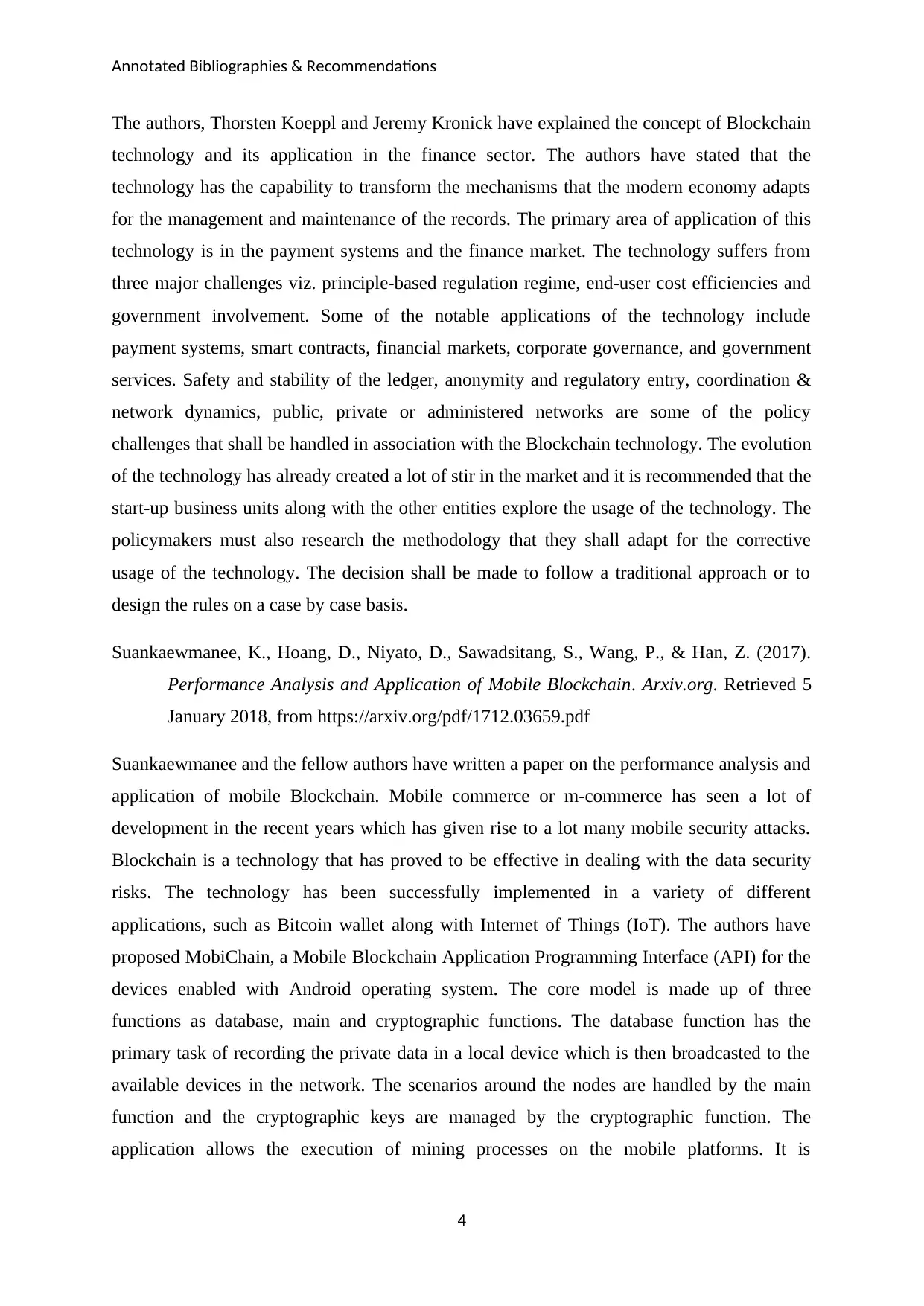
Annotated Bibliographies & Recommendations
The authors, Thorsten Koeppl and Jeremy Kronick have explained the concept of Blockchain
technology and its application in the finance sector. The authors have stated that the
technology has the capability to transform the mechanisms that the modern economy adapts
for the management and maintenance of the records. The primary area of application of this
technology is in the payment systems and the finance market. The technology suffers from
three major challenges viz. principle-based regulation regime, end-user cost efficiencies and
government involvement. Some of the notable applications of the technology include
payment systems, smart contracts, financial markets, corporate governance, and government
services. Safety and stability of the ledger, anonymity and regulatory entry, coordination &
network dynamics, public, private or administered networks are some of the policy
challenges that shall be handled in association with the Blockchain technology. The evolution
of the technology has already created a lot of stir in the market and it is recommended that the
start-up business units along with the other entities explore the usage of the technology. The
policymakers must also research the methodology that they shall adapt for the corrective
usage of the technology. The decision shall be made to follow a traditional approach or to
design the rules on a case by case basis.
Suankaewmanee, K., Hoang, D., Niyato, D., Sawadsitang, S., Wang, P., & Han, Z. (2017).
Performance Analysis and Application of Mobile Blockchain. Arxiv.org. Retrieved 5
January 2018, from https://arxiv.org/pdf/1712.03659.pdf
Suankaewmanee and the fellow authors have written a paper on the performance analysis and
application of mobile Blockchain. Mobile commerce or m-commerce has seen a lot of
development in the recent years which has given rise to a lot many mobile security attacks.
Blockchain is a technology that has proved to be effective in dealing with the data security
risks. The technology has been successfully implemented in a variety of different
applications, such as Bitcoin wallet along with Internet of Things (IoT). The authors have
proposed MobiChain, a Mobile Blockchain Application Programming Interface (API) for the
devices enabled with Android operating system. The core model is made up of three
functions as database, main and cryptographic functions. The database function has the
primary task of recording the private data in a local device which is then broadcasted to the
available devices in the network. The scenarios around the nodes are handled by the main
function and the cryptographic keys are managed by the cryptographic function. The
application allows the execution of mining processes on the mobile platforms. It is
4
The authors, Thorsten Koeppl and Jeremy Kronick have explained the concept of Blockchain
technology and its application in the finance sector. The authors have stated that the
technology has the capability to transform the mechanisms that the modern economy adapts
for the management and maintenance of the records. The primary area of application of this
technology is in the payment systems and the finance market. The technology suffers from
three major challenges viz. principle-based regulation regime, end-user cost efficiencies and
government involvement. Some of the notable applications of the technology include
payment systems, smart contracts, financial markets, corporate governance, and government
services. Safety and stability of the ledger, anonymity and regulatory entry, coordination &
network dynamics, public, private or administered networks are some of the policy
challenges that shall be handled in association with the Blockchain technology. The evolution
of the technology has already created a lot of stir in the market and it is recommended that the
start-up business units along with the other entities explore the usage of the technology. The
policymakers must also research the methodology that they shall adapt for the corrective
usage of the technology. The decision shall be made to follow a traditional approach or to
design the rules on a case by case basis.
Suankaewmanee, K., Hoang, D., Niyato, D., Sawadsitang, S., Wang, P., & Han, Z. (2017).
Performance Analysis and Application of Mobile Blockchain. Arxiv.org. Retrieved 5
January 2018, from https://arxiv.org/pdf/1712.03659.pdf
Suankaewmanee and the fellow authors have written a paper on the performance analysis and
application of mobile Blockchain. Mobile commerce or m-commerce has seen a lot of
development in the recent years which has given rise to a lot many mobile security attacks.
Blockchain is a technology that has proved to be effective in dealing with the data security
risks. The technology has been successfully implemented in a variety of different
applications, such as Bitcoin wallet along with Internet of Things (IoT). The authors have
proposed MobiChain, a Mobile Blockchain Application Programming Interface (API) for the
devices enabled with Android operating system. The core model is made up of three
functions as database, main and cryptographic functions. The database function has the
primary task of recording the private data in a local device which is then broadcasted to the
available devices in the network. The scenarios around the nodes are handled by the main
function and the cryptographic keys are managed by the cryptographic function. The
application allows the execution of mining processes on the mobile platforms. It is
4

Annotated Bibliographies & Recommendations
recommended to enhance the system qualities of the application and to market it correctly so
that the maximum number of user may benefit from the features of the same.
5
recommended to enhance the system qualities of the application and to market it correctly so
that the maximum number of user may benefit from the features of the same.
5
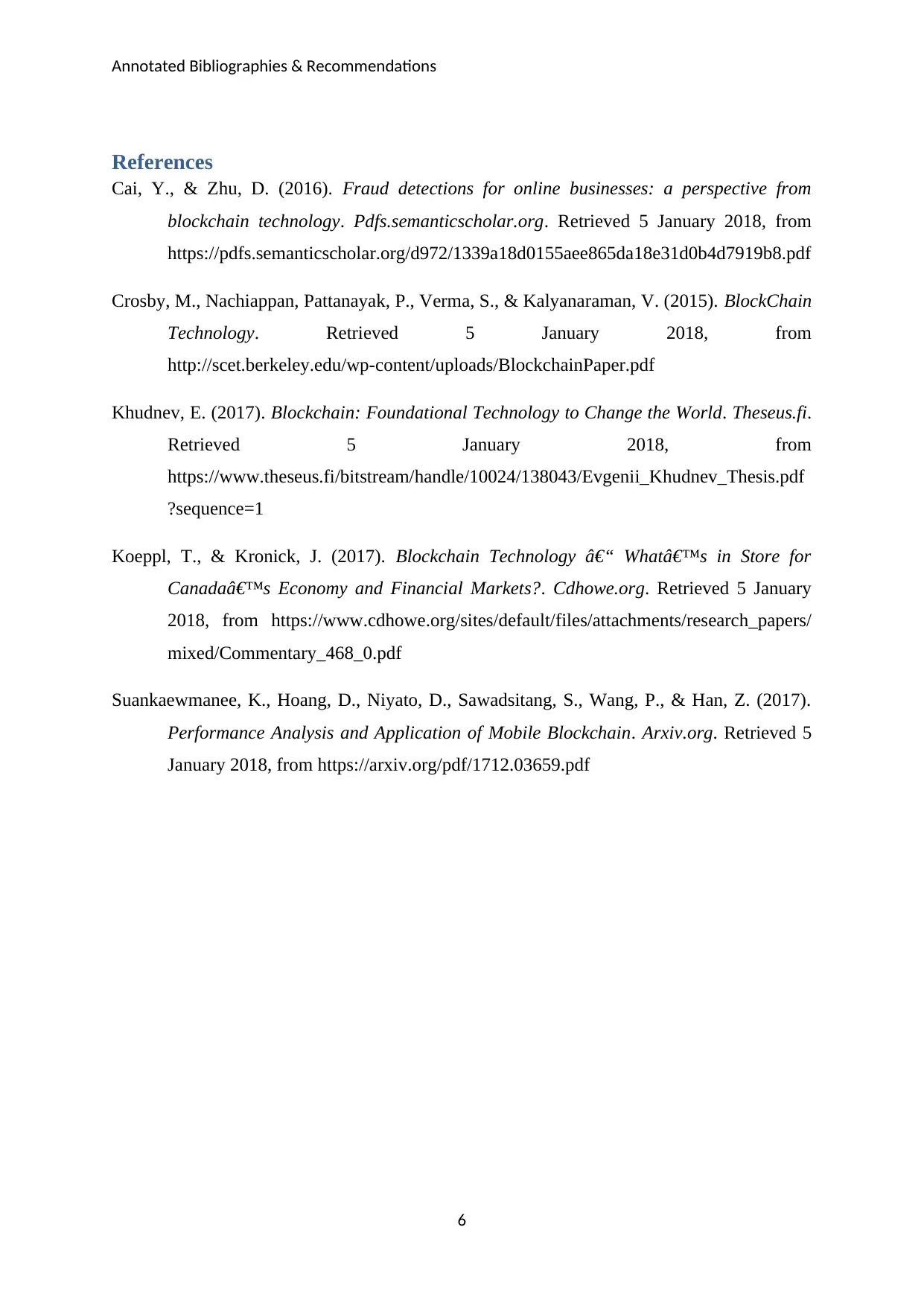
Annotated Bibliographies & Recommendations
References
Cai, Y., & Zhu, D. (2016). Fraud detections for online businesses: a perspective from
blockchain technology. Pdfs.semanticscholar.org. Retrieved 5 January 2018, from
https://pdfs.semanticscholar.org/d972/1339a18d0155aee865da18e31d0b4d7919b8.pdf
Crosby, M., Nachiappan, Pattanayak, P., Verma, S., & Kalyanaraman, V. (2015). BlockChain
Technology. Retrieved 5 January 2018, from
http://scet.berkeley.edu/wp-content/uploads/BlockchainPaper.pdf
Khudnev, E. (2017). Blockchain: Foundational Technology to Change the World. Theseus.fi.
Retrieved 5 January 2018, from
https://www.theseus.fi/bitstream/handle/10024/138043/Evgenii_Khudnev_Thesis.pdf
?sequence=1
Koeppl, T., & Kronick, J. (2017). Blockchain Technology – What’s in Store for
Canada’s Economy and Financial Markets?. Cdhowe.org. Retrieved 5 January
2018, from https://www.cdhowe.org/sites/default/files/attachments/research_papers/
mixed/Commentary_468_0.pdf
Suankaewmanee, K., Hoang, D., Niyato, D., Sawadsitang, S., Wang, P., & Han, Z. (2017).
Performance Analysis and Application of Mobile Blockchain. Arxiv.org. Retrieved 5
January 2018, from https://arxiv.org/pdf/1712.03659.pdf
6
References
Cai, Y., & Zhu, D. (2016). Fraud detections for online businesses: a perspective from
blockchain technology. Pdfs.semanticscholar.org. Retrieved 5 January 2018, from
https://pdfs.semanticscholar.org/d972/1339a18d0155aee865da18e31d0b4d7919b8.pdf
Crosby, M., Nachiappan, Pattanayak, P., Verma, S., & Kalyanaraman, V. (2015). BlockChain
Technology. Retrieved 5 January 2018, from
http://scet.berkeley.edu/wp-content/uploads/BlockchainPaper.pdf
Khudnev, E. (2017). Blockchain: Foundational Technology to Change the World. Theseus.fi.
Retrieved 5 January 2018, from
https://www.theseus.fi/bitstream/handle/10024/138043/Evgenii_Khudnev_Thesis.pdf
?sequence=1
Koeppl, T., & Kronick, J. (2017). Blockchain Technology – What’s in Store for
Canada’s Economy and Financial Markets?. Cdhowe.org. Retrieved 5 January
2018, from https://www.cdhowe.org/sites/default/files/attachments/research_papers/
mixed/Commentary_468_0.pdf
Suankaewmanee, K., Hoang, D., Niyato, D., Sawadsitang, S., Wang, P., & Han, Z. (2017).
Performance Analysis and Application of Mobile Blockchain. Arxiv.org. Retrieved 5
January 2018, from https://arxiv.org/pdf/1712.03659.pdf
6
1 out of 7
Your All-in-One AI-Powered Toolkit for Academic Success.
+13062052269
info@desklib.com
Available 24*7 on WhatsApp / Email
![[object Object]](/_next/static/media/star-bottom.7253800d.svg)
Unlock your academic potential
© 2024 | Zucol Services PVT LTD | All rights reserved.


